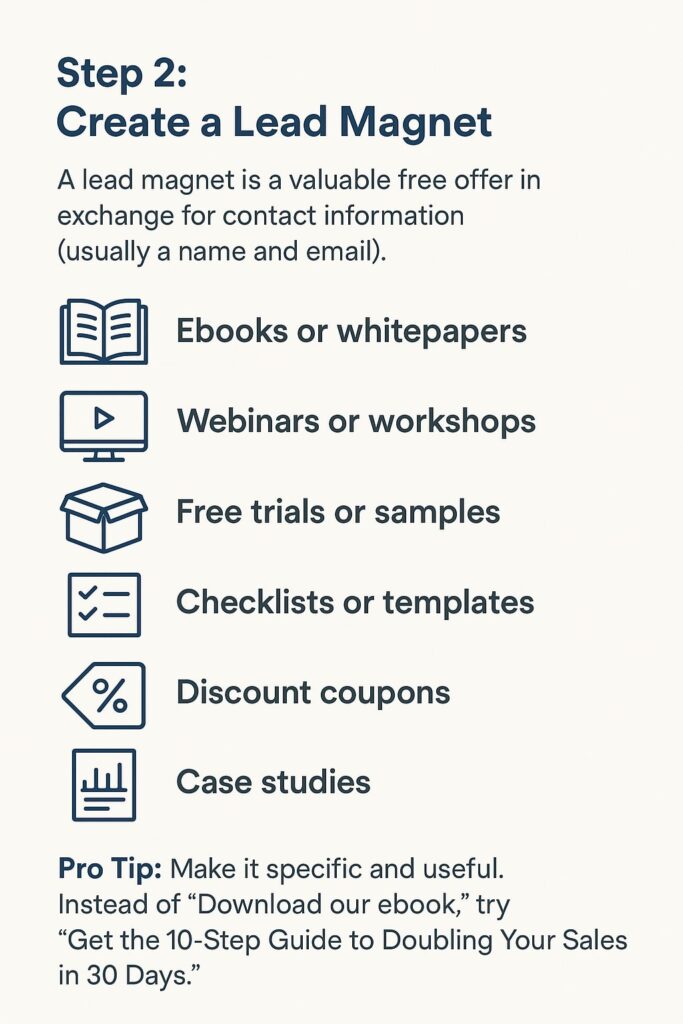In today’s competitive digital world, if you want your business to grow consistently, lead generation is not optional — it’s essential. Whether you're a startup, small business owner, or a seasoned marketer, understanding how to attract, nurture, and convert leads is critical for success.
This guide covers everything you need to know about lead generation: what it is, why it’s important, strategies that work, and tools that make the process easier Lead Generation.
🧠 What Is Lead Generation?
Lead generation is the process of attracting potential customers (leads) to your business and converting them into someone who has shown interest in your product or service.
In simple terms:
It’s about getting people to raise their hands and say, “Hey, I’m interested in what you offer!”
These leads could come from your website, social media, email campaigns, online ads, webinars, and more.
🔎 Types of Leads
-
Marketing Qualified Leads (MQLs) – People who have shown interest but aren't ready to buy yet (e.g., someone who downloads an ebook).
-
Sales Qualified Leads (SQLs) – Leads that have taken actions that indicate they’re ready to make a purchase (e.g., someone who requests a demo).
-
Product Qualified Leads (PQLs) – Users who have tried your product and are likely to upgrade to a paid version.
-
Service Qualified Leads – Customers who indicate interest in a specific service during a conversation.
🧩 Why Is Lead Generation Important?
Without leads, you don’t have customers. And without customers, you don’t have a business. Here’s why lead generation is vital:
-
🔥 Boosts Sales & Revenue – More leads = more chances to convert.
-
🎯 Targets the Right People – Attract people who are genuinely interested.
-
💰 Improves ROI – Focus on channels and campaigns that bring in results.
-
🧱 Builds a Customer Base – Helps build an audience for long-term growth.
-
📊 Data-Driven Marketing – Understand what works and refine your strategy.
🛠️ How to Do Lead Generation – Step by Step
Here’s a simple roadmap to build your lead generation strategy:
Step 1: Identify Your Target Audience
You can't market to everyone. Narrow your focus by asking:
-
Who are your ideal customers?
-
What problems are they trying to solve?
-
Where do they spend time online?
Create buyer personas to define your ideal customers based on demographics, behaviors, goals, and pain points.
Step 2: Create a Lead Magnet

A lead magnet is a valuable free offer in exchange for contact information (usually a name and email).
Examples of Lead Magnets:
-
Ebooks or whitepapers
-
Webinars or workshops
-
Free trials or samples
-
Checklists or templates
-
Discount coupons
-
Case studies
Pro Tip: Make it specific and useful. Instead of “Download our ebook,” try “Get the 10-Step Guide to Doubling Your Sales in 30 Days.”
Step 3: Build a High-Converting Landing Page
This is where the magic happens.
A good landing page includes:
-
A compelling headline
-
Clear description of the offer
-
A short form to capture lead info
-
A strong CTA (Call to Action)
-
Trust signals (like testimonials or logos)
Step 4: Drive Traffic to Your Landing Page
Use different marketing channels to get people to your page:
🔹 Organic Traffic
-
SEO (optimize your content to rank on Google)
-
Blogging (target keyword-rich topics)
-
Social media (Facebook, LinkedIn, Instagram, etc.)
🔹 Paid Traffic
-
Google Ads
-
Facebook Ads
-
LinkedIn Ads
-
YouTube pre-roll ads
🔹 Referral Traffic
-
Guest blogging
-
Influencer marketing
-
Strategic partnerships
Step 5: Capture & Nurture Leads
Once someone signs up, they enter your lead nurturing system, usually via email.
Use email automation to:
-
Send a welcome series
-
Share helpful content
-
Offer personalized recommendations
-
Move them toward a buying decision
Tools for email automation:
-
ActiveCampaign
-
ConvertKit
-
HubSpot
Step 6: Qualify & Score Leads
Not all leads are ready to buy. That’s where lead scoring comes in.
Lead scoring assigns a value to each lead based on actions like:
-
Visiting a pricing page (+10 points)
-
Opening emails (+5)
-
Attending a webinar (+15)
Once a lead hits a certain score, pass them to the sales team or send them a special offer.
Step 7: Follow Up & Convert
Follow up with:
-
A sales call
-
A personalized email
-
A product demo
-
A free consultation
The more tailored your follow-up, the better your chances of closing the deal.
📈 Top Lead Generation Strategies That Work
Here are proven methods used by successful businesses:
1. Content Marketing
Blog posts, videos, infographics, and guides that educate and attract.
2. SEO (Search Engine Optimization)
Ranking on Google for terms your audience is searching for.
3. PPC (Pay-Per-Click Advertising)
Running ads on Google, Facebook, or LinkedIn to bring in traffic.
4. Social Media Marketing
Build trust, run contests, share content, and engage with followers.
5. Webinars & Events
Live events build authority and help you engage directly with potential leads.
6. Referral Programs
Encourage your current users to refer others for incentives.
7. Chatbots & Live Chat
Answer questions in real-time and collect lead info while they’re engaged.
🧰 Best Lead Generation Tools
Here’s a list of tools to make the process smoother:
| Category | Tools |
|---|---|
| Email Marketing | Mailchimp, ConvertKit, AWeber |
| CRM & Automation | HubSpot, Salesforce, Zoho CRM |
| Landing Page Builders | Unbounce, Leadpages, Instapage |
| Chatbots | Drift, Tawk.to, Intercom |
| Analytics & Heatmaps | Google Analytics, Hotjar |
| SEO Tools | Ahrefs, SEMrush, Ubersuggest |
⚙️ B2B vs. B2C Lead Generation
While the core principles remain the same, the approach varies.
| B2B | B2C |
|---|---|
| Longer sales cycle | Shorter decision-making |
| Focus on logic & ROI | Focus on emotion & desire |
| Use of LinkedIn, webinars | Use of Instagram, Facebook |
| Product demos, case studies | Discounts, limited-time offers |
🧠 Common Mistakes to Avoid
-
🚫 Not having a clear CTA
-
🚫 Targeting the wrong audience
-
🚫 No follow-up system in place
-
🚫 Focusing only on quantity, not quality
-
🚫 Ignoring analytics and data
✅ Final Thoughts
Lead generation isn’t a one-time task — it’s an ongoing process that fuels your entire business. With the right strategy, tools, and mindset, you can create a predictable system that attracts leads, nurtures them, and turns them into loyal customers.
Focus on delivering value, understanding your audience, and using data to optimize everything.


